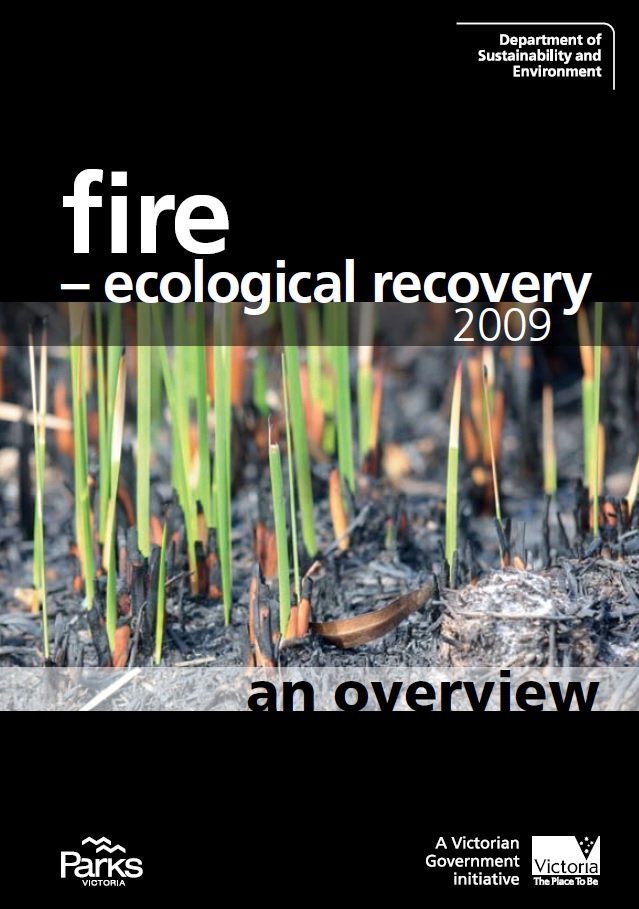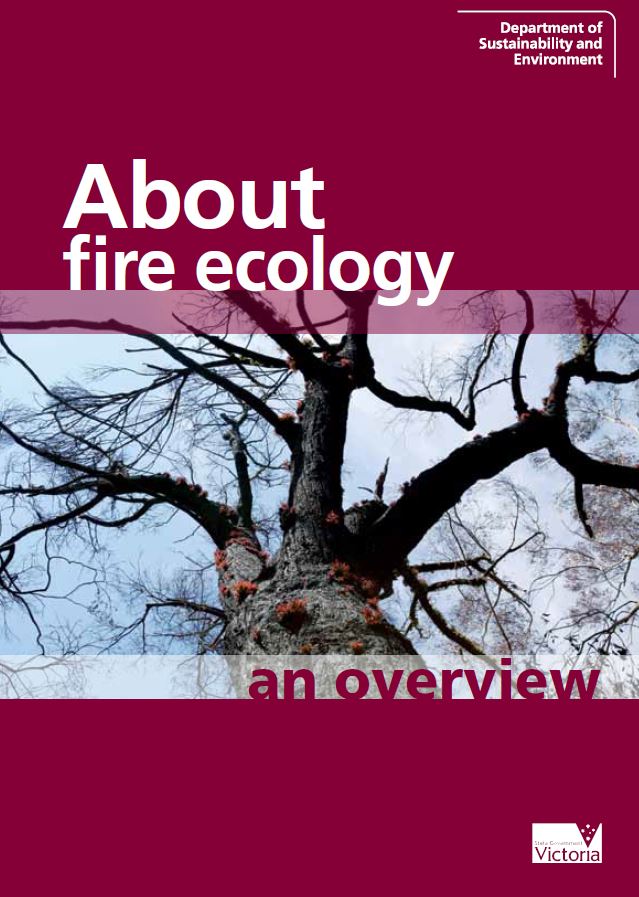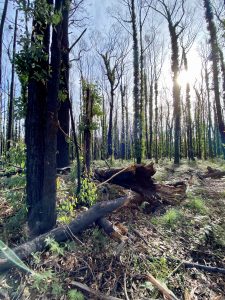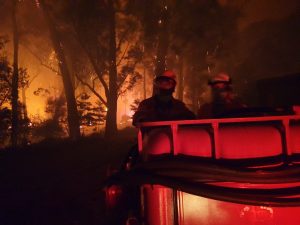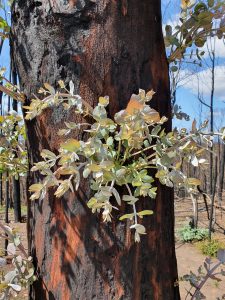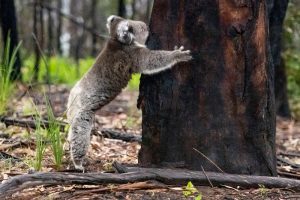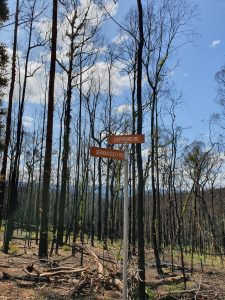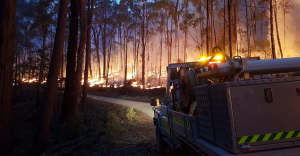Fire Ecology Overview
Fire is an important ecological disturbance in many areas around the world. It affects the structure of many ecological communities including some forests, grasslands and heathlands. An understanding of fire, the disturbance it creates and the ways in which plants and animals respond is important. Fire ecology is the area of applied ecology dealing with the effects of fire on individual species and ecosystems.
The Australian flora and fauna has evolved in response to a gradually drying climate and to occasional long and severe droughts. Many Australian shrubs and trees are highly inflammable and some actually need fire to regenerate. Others are fire sensitive and easily killed by fire. Plant species and communities respond to differently to varying fire regimes (intensity, frequency and season).
Animals rely on the native flora for food and shelter and often have a very specific relationship with particular plants or vegetation associations.
Fire is a necessary disturbance in some ecosystems. Burning for biodiversity is an accepted management approach and the traditional burning practices of Indigenous communities have long been used to manage and modify Australian landscapes. However, it is essential to apply appropriate fire regimes in different ecological systems; and it must be remembered that there are some ecosystems (e.g. rainforests) where fire is not an appropriate management tool. The ecosystem’s response to fire must be understood for all ecosystems in which fire is to be used as a tool.
Weeds after fire – Are these Weeds or Natives?
Weed species identification brochures
It can be challenging to tell the difference between native and weed plants that respond to fire. The regionally categorised brochures below focus on only a small number of regionally prioritised weeds and commonly mistaken natives, according to the areas where they are found. Many plant species are stimulated to reproduce following a fire. The increase of available nutrients, light and moisture encourage rapid seed germination and growth in some plants. These are called colonising plants; they grow quick to protect the topsoil after disturbances like fire, and they can be both native and invasive species.
Bruthen
Buchan
Cann River
Clifton Creek
Errinundra-Snowy Area
Mallacoota
Omeo
Orbost
Sarsfield
Wairewa
Useful links
- Fire ecology retrospective study looking back to learn for the future
- Study shows wildfires increasing in size and frequency
- Fire Ecology and Biodiversity
- Bushfire science, research and adaptive management
- Guide to environmentally sustainable bushfire management in rural Victoria
- Victoria’s bushfire emergency: Biodiversity response and recovery
- January 2020 Eastern Victoria Bushfires & Biodiversity
